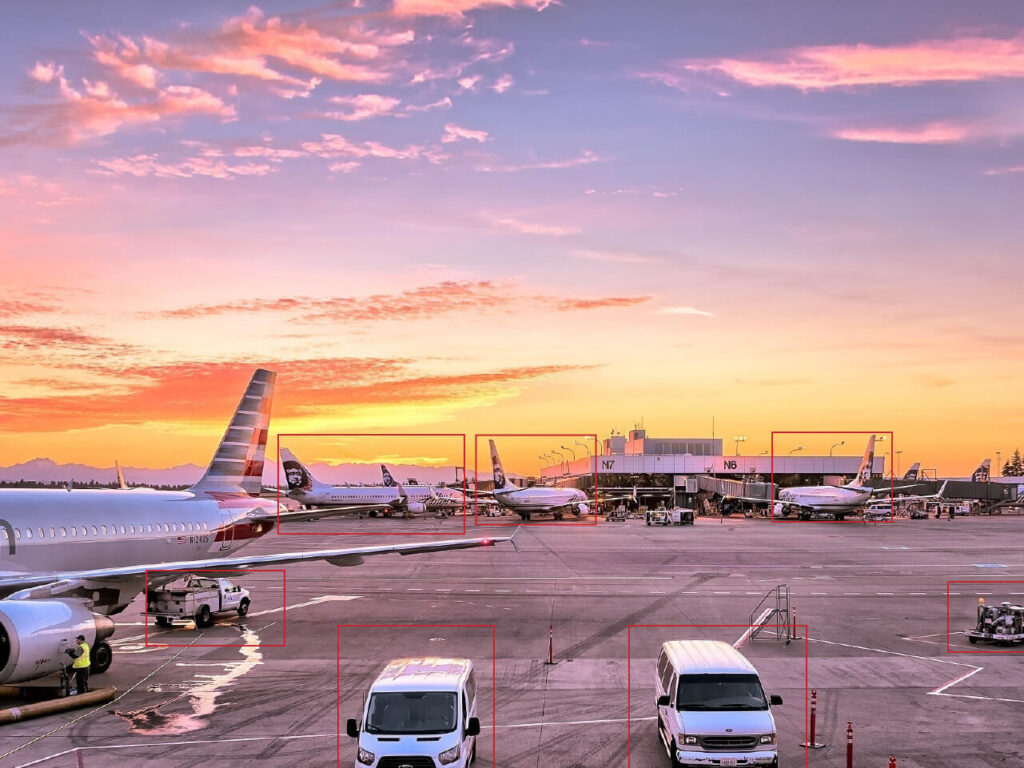
The digital transformation of air traffic control
How birkle IT implements the remote tower.
Enhancing aviation safety and concurrently augmenting efficiency is a harmonious pursuit.
The world is becoming increasingly interconnected, and post the Covid-19 pandemic, the numbers of air travelers are on the rise once again. Projects aimed at enhancing efficiency and improving safety are now more urgently implemented. In the realm of aviation, consistent digitization and workplace automation are imperative.
Through the integration of cutting-edge technologies such as artificial intelligence and pattern recognition, air traffic control in the tower can be rendered safer and more efficient. We were involved in a pioneering project at the forefront of these advancements.
The objective is to alleviate the workloads of air traffic controllers, enhance operational efficiency, and minimize safety risks.
The Air Traffic Management (ATM) serves as a pivotal department responsible for the safety and seamless execution of air traffic. Air Traffic Controllers (ATCs) act as vigilant guardians on the ground, overseeing three primary areas:
- Airspace control
- Ground control
- Flight data monitoring and clearance issuance
Presently, visual observation from the airport control tower remains the predominant method for managing the immediate airport vicinity. For ATMs to fulfill their duties at a high standard, maintaining a heightened level of concentration is imperative, particularly during peak traffic periods.
The solution: birkle IT AG enhances airport safety through the development and implementation of Remote Towers, leveraging the capabilities of artificial intelligence.
Driven by the aspiration to genuinely alleviate the workload for air traffic controllers, the project team at Birkle IT developed a full-stack solution that entirely redefines the working environment for air traffic controllers (ATCs).
By harnessing the capabilities of Remote Tower software, manual observation is complemented, providing space for enhanced decision-making among the staff.

Thus, we executed the project as follows:
The user interface for air traffic controllers, developed by Birkle IT, encompasses a real-time video feed displayed on two video screens and intricately linked to analysis servers. A network of strategically positioned cameras surrounds the airport, offering a seamless panoramic view of the airport environment. The perspective closely resembles that of looking through the windows of a physical control tower.
To create this comprehensive view, we installed 16 panoramic cameras and 2 PTZ (Pan-Tilt-Zoom) cameras at strategic points. Each of these cameras delivers 30 high-resolution images per second.
A pivotal component of the solution is an object tracking software, which rapidly identifies a predefined set of object classes in less than 200 milliseconds. This software annotates recognized objects with overlaid graphical elements and meticulously tracks them throughout the entire video feed.

Critical project requirements for safety: Functionality even in poor visibility conditions.
An inherent requirement for the software from the outset was its robustness in conditions of limited visibility. In such scenarios, AI, through appropriate data augmentation, can provide significant added value. Well-trained AI often excels in correctly assigning objects even when a human analyst struggles to discern them. In this context, the human expertise and the software solution complement each other optimally. We take great pride in pioneering this pilot project and hope that other airports can be equipped with this system.
Understanding Aviation Safety
Exploring novel avenues with the Remote Tower.
The Current State: From Feasibility Study to Serial Viability.
The current product implementation is tailored as a pilot for a specialized task, serving a limited user base. Nevertheless, the underlying concept of the project possesses all the prerequisites for extensive deployment.
The software’s capability for automated real-time object recognition and tracking is a pivotal element for project-specific advancements by our clients. Therefore, alongside the software delivery, we have provided a training environment for the neural network, enabling our clients to independently develop additional object classes and video data.
Drawing on the insights gained from this project, the experts at Birkle IT are already engaged in another significant project of international significance.
.
Contact your
Expert for Logistics
Julius Hoffmann
International Business Representative
email: logistik@birkle-it.com



